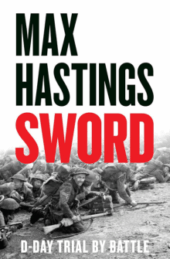On the day Britain declared war on Germany, 3 September 1939, Parliament immediately passed The National Service (Armed Forces) Act. All men aged between 18 and 41 were required to register for service. My grandfather John James Doherty ‘JJ’, a talented linguist, musician and teacher, was called up and found himself in Lulworth, Dorset training to be a tank soldier, a job – if you had ever met him – you’d know he was most ill-suited for.
Luckily the system had other ideas and within a year he found himself recruited to join the codebreakers at Bletchley Park, employing his language skills alongside fellow boffins, ‘misfits and weirdos with odd skills’ (in the words of a former Downing St adviser).
“Dogged persistence, extremely painstaking attention to minute details, and brilliance in coordinating and integrating into one vast picture the many small operations involved, have brought about a success beyond the wildest expectations of any cryptanalyst’s fancy.”
Michael Smith takes a wide lens to the Bletchley story, and uses it as the springboard to show how the British and American secret services worked together from the first tentative meetings in 1939, dominated by suspicion and mutual incomprehension, before forming one of the most fundamental pillars of our collective security, a special relationship built on intelligence sharing, against a panoply of threats.
Smith brings insight, credibility and form to his writing. He served in British military intelligence in the 80s and has written extensively about spying and how it works. The Real Special Relationship receives high praise from a roll call of former spooks: Michael Hayden, Sir John Scarlett, John Brennan, Sir David Ormand, Leon Panetta and Robert Hannigan.
Ultimately there are two ways to read works such as these by éminence grises of the intelligence world. On the one hand the intelligence lens sheds new colours and texture on already familiar stories, such as the Cuban Crisis. On the other, they themselves form part of the shadowplay of intelligence and information shaping. The Public Records Act of 1958, subsequent amendments, and the Freedom of Information Act 2000 continue to restrict access to government documents deemed to be sensitive.
Understandably therefore Smith’s accounts of the origins of the Special Relationship in the 1940s may be taken to be more objective than, for example, his account of the manoeuvrings to persuade Gaddafi to relinquish his nuclear programme in 2003, a deal that ended rather badly for Gaddafi and sent a message to the strongmen of the Middle East. That aside, this is a fabulously insightful parallel history that takes us behind the scenes of some of the major events of the 20 Century. It should be read by armchair spooks everywhere.
Justin Doherty is Editor at Large at Aspects of History.







